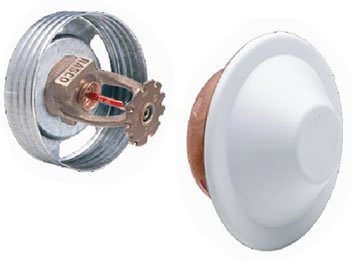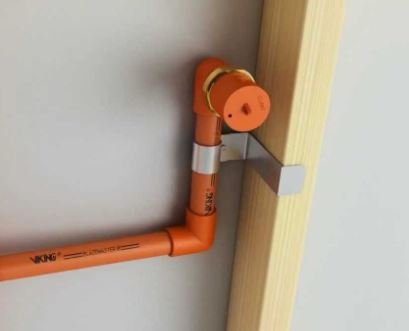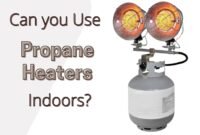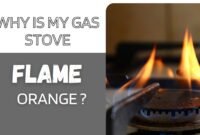If you are looking for a concealed sprinkler head, you need to consider the outcome of the fire sprinkler quote depending on the size of your room, the water supply, and the type of your building.
In this article, you will find out things you should know about sprinkler heads and the preparation for you before installing them.
Concealed Fire Sprinkler Heads
Several industries have successfully managed to change the visual impact of sprinkler systems slightly year by year by developing a fire suppression system that includes sprinkler head covers.
Nowadays, many people are more accepting of the new concealed fire sprinkler they get used to with the conventional ones and realize how effective the new type is. It can also fulfill a very worthy function while incorporating into their surroundings.
“Concealed fire sprinkler heads are designed to blend seamlessly with the ceiling, providing an aesthetic advantage. They are particularly popular in residential and commercial settings where visual appeal is important.”

Concealed Sprinkler Head Design
Many people still don’t know how fire sprinklers work. They usually notice them when they go to big department stores and warehouses, where the visual impact is sometimes considered unimportant.

Many department stores are usually more interested in ads about how they protect their customers when there is fire than in using a system of concealed fire suppression that can visually disguise them.
“In my experience, concealed sprinkler heads are nearly invisible when installed correctly. They activate efficiently when a fire is detected, ensuring safety without compromising the room’s appearance.”
The pendant sprinkler head is not the same as concealed fire sprinkler.
There is a significant difference between a pendant and concealed fire sprinkler. The difference that is clearly seen is about the place. A pendent sprinkler has to be installed below the ceiling level just to make sure the flow of the water will be horizontal once the head is activated.
On the other hand, the concealed sprinkler has to be installed slightly higher from the ceiling level until it leaves just a cover of the plate flush on the ceiling.
The plate of cover can fall from the unit once the temperature bar increases to a certain degree (usually around 58 degrees Celsius). After that, the plate’s detector, which has a function to send the water horizontally from the room, will suddenly fall under the ceiling level before it starts to activate. The heating element will be more sensitive when it reaches around 68 degrees Celsius, which is high enough.
After that, the heat will automatically trigger the water flow to run horizontally. Pendant heads were more popular than other fire sprinklers a few years ago. But now, the concealed fire sprinkler has replaced the pendant sprinkler’s popularity because of its effectiveness and design.
Sprinkler Head Installation
First, a concealed fire sprinkler in a residential area is a fast-response, two-stage device with a small downlight. The unit’s plate cover is usually white.
When a fire is detected, the cover plate’s operating point will soon drop below the ceiling level. When the ceiling temperature reaches above 70 degrees Celsius, the bi-metal strip will be activated.

Meanwhile, the seal will release, allowing the water to run to its fullest and be aimed at the fire. Besides, those devices are also very inconspicuous.
When someone looks at the devices, the thing that he usually sees the first time is only a small, flat plate. The plate’s size is only around 60mm in diameter and comes with the same color as the ceiling.
“I’ve seen that the inconspicuous design of concealed sprinkler heads often surprises homeowners who didn’t even realize they had a fire suppression system installed. It’s a testament to the seamless integration these systems offer.”
Fire sprinklers for residential use sometimes already fulfill the requirement to remove the compartment, especially in their open-plan design. However, open-plan design also has a disadvantage. The device may be lost if the ultimate area is on fire. Meanwhile, the fire sprinkler isn’t clear to look at.
That’s why, to overcome this obstacle, the architects of concealed sprinkler heads created a modern design while adjusting to the building’s requirements.
It has to be related to regulation to ensure that people who live in the building are safe from fire events. Like in many other plumbing systems, the pipework in the fire sprinkler is similar to the plumbing system. The pipelines are within the ceiling void, and then they are mixed with the sprinkler heads that are covered to protect the people from seeing it when it is actually installed on their property.
“Concealed sprinklers work by having the cover plate drop away when exposed to heat, allowing the heat-sensitive bulb to activate and release water. This two-stage process ensures a quick response to fires.”
Read also: How to Adjust a Rainbird Sprinkler Head in Easy Way?
Concealed Fire Sprinkler Heads Disadvantage
Many companies that sell fire sprinklers compete to create the best design with more benefits. They want the fire sprinkler to be a fast-response device with a pleasing design, including the sprinkler’s activate system at the fire’s beginning development.
The system has the minimum quantity of water, so the plate’s cover has to be removed carefully. It has to be at the mid-temperature. It should be at the right time, not too late or too fast, because releasing too fast can cause false activation.
It can’t be too late because the fire will spread, and putting it out with the existing water quote will be more complicated.
Now, let’s talk about the factors that can slow down the cover plate. Decorator mastic, which can be found surrounding the plate’s cover, or paint that contains emulsion, which is applied when it is re-decorated, can be some factors that can slow down the release of water from the cover plate.
“I’ve noticed that any obstruction, such as paint or mastic, can indeed delay the activation of the cover plate. Regular maintenance and checks are crucial to ensure optimal performance.”
If the cover plates of fire sprinkler heads are covered by emulsion or paint, the concealed sprinkler head’s operation can slow down. However, this is not considered a serious problem if the systems are serviced regularly and the cover plates are made annually as a visual check.
Choose the Right Fire Sprinkler you need
Remember to consult with the expert team before buying a fire sprinkler system. You will understand more after the consultation. No matter how small or big your property is and how much money you spend on it, you will be guaranteed to get the right fire sprinkler.
Different Types of Fire Sprinkler Heads
| Type | Description | Application |
|---|---|---|
| Concealed Sprinkler | Installed flush with the ceiling, activated by heat. | Homes, offices, aesthetic-sensitive areas |
| Pendant Sprinkler | Hangs down from the ceiling, disperses water in a circular pattern. | Warehouses, industrial buildings |
| Sidewall Sprinkler | Mounted on the wall close to the ceiling, directs water outwards. | Offices, corridors, lobbies |
Of course, the price depends on your basis, and all companies usually will prepare a quote for you. To successfully arrange the installation of concealed sprinkler heads, you need to contact the company where you want to order the sprinkler.
Good luck!


